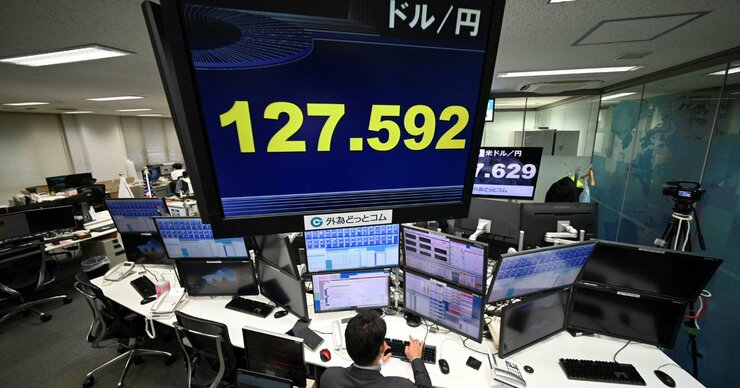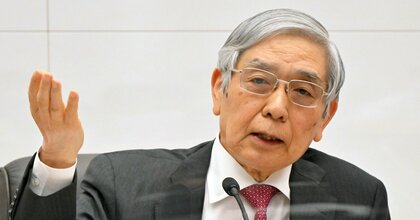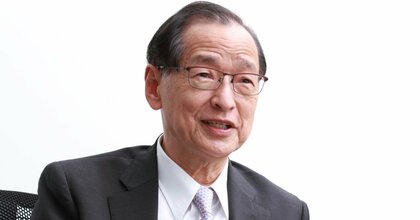Originally published in Japanese on Jan. 20, 2023
Realistic expectations
The Bank of Japan (BOJ) left its monetary easing largely unaltered at the policy meeting held on Jan. 17 and Jan. 18.
At its policy meeting in December of last year, the central bank unexpectedly amended its yield-curve control framework by expanding the range of permitted yield movements on long-term Japanese government bonds (JGBs) and allowing yields to rise.
Financial markets consequently initially speculated that further policy changes could come at the January meeting, such as a further expansion of the yield movement band, but the BOJ declined to make a second successive change in policy. Some market observers have suggested that the BOJ will explain that it now expects to reach its 2% inflation target after the new BOJ governor takes office in April, and that it will take all necessary steps to normalize monetary policy, including exiting negative interest rates. However, this view may be expected too much.
Under the next governor, it is thought that the BOJ will further expand the yield band for government bonds and revise the inflation target in the joint statement between the central bank and the government before exiting negative interest rates. In this case, yield-curve control could remain in place and normalization may be postponed until mid-2024 depending on the U.S. economy and other factors.
Policy prospects
The BOJ revised its 1.6% forecast for growth in the consumer price index in fiscal 2023 upward, citing the technical factor of an economic rebound from the government’s stimulus measures that tamped down energy prices.
Regarding prices, while the impact of overseas factors like rising resource prices will fall, upward pressure will come from domestic factors such as improvement in the supply-demand gap, wage increases in the spring wage negotiations, and the growing sense of a labor shortage. However, caution is warranted as to whether inflation will remain at a stable level above 2%.
The biggest immediate challenge for the BOJ is to quickly exit the current conditions in which it is forced to purchase large amounts of JGBs.
Market expectations for additional changes to yield-curve control, including a wider long-term yield band, caused long-term JGB yields to rise, forcing the BOJ to purchase a record 12 trillion yen ($92.3 billion) in JGBs over just four business days to defend the yield cap.
This is not sustainable. If these conditions persist, additional changes to yield-curve control could be implemented at the next monetary policy meeting in March.
However, if the BOJ’s decision to leave policy unaltered at the January meeting tempers market expectations for early policy changes and a wider yield band, and if upward pressure on long-term JGB yields weakens, the BOJ will probably not make any additional changes at its March meeting.
Governor Haruhiko Kuroda is unlikely to readily accept additional policy changes. Major changes to yield-curve control over a short period would give the impression that the monetary easing framework had suddenly collapsed at the end of his term. Kuroda is strongly inclined to stick to his convictions and keep the monetary easing framework in place while he remains in office.
Moreover, March is the end of the fiscal year, and an increase in JGB yields would have a negative impact on private banks' financial results. The BOJ likely would prefer to avoid this, if possible.
If the JGB market regains some stability, the main scenario at this point is that additional changes to yield-curve control, such as a wider yield band, would occur under the new leadership that will begin in April.
Orderly normalization
Some observers have suggested that even if the yield-curve control’s long-term yield band is expanded, yields could quickly rise to the upper limit and stay there, prompting the BOJ to discard the band or even yield-curve control itself.
Yield-curve control is a problematic framework that inhibits the function of the JGB market and prevents the BOJ from reducing its bond purchases, and I believe it is best to end it as soon as possible.
However, the BOJ is unlikely to suddenly drop yield-curve control this year. This is because the BOJ is thought to now consider yield-curve control less as just one part of its overall easing program, and more as a framework necessary to smoothly exit negative interest rates. Ending negative interest rates is the biggest milestone in the normalization process and a step that is expected to occur under the new leadership.
To ensure long-term JGB yields remain stable, two policy measures must be employed in combination: forward guidance on future policy rates to control market expectations and increases or decreases in JGB purchases.
Long-term JGB yields risk jumping significantly if markets anticipate a large future hike in policy rates when negative interest rates are ended.
It is uncertain whether forward guidance alone will be enough to maintain stable long-term JGB yields. Therefore, the BOJ likely believes that a smooth exit from negative interest rates requires the yield-curve control framework for JGB purchases so the central bank can, if necessary, flexibly buy JGBs through fixed-rate bond-buying operations. This would work to suppress an increase in yields.
If yield-curve control is ended, and the BOJ thus relinquishes its control over long-term JGB yields, the central bank would have no basis for conducting these kinds of fixed-rate operations.
Even if only the yield band were eliminated, if the BOJ were to conduct a fixed-rate operation at a given level when negative interest rates are ended, the yield cap would effectively be once again set at that level.
Considering this, it is unlikely that the BOJ will end the yield band or yield-curve control more broadly until it has exited negative interest rates. That will be the biggest milestone in the normalization process, and the yield-curve control framework will remain in place until then.
What to watch
Now the most important thing to watch is the BOJ’s upcoming policy meeting from Apr. 27 to Apr. 28, the first meeting under the new governor.
Regardless of who is chosen to lead the central bank, the BOJ will likely continue to promote monetary policy flexibility and normalization under the leadership of the administrative staff.At the April policy meeting, however, the BOJ may revisit the 2013 joint statement with the government, including the 2% inflation target as a longer-term objective, or reconsider the 2% target itself. This would increase the flexibility of monetary policy.
The BOJ likely wants to independently review the inflation target. If it changes the target through an amendment to the joint statement while coordinating with the government, it will once again set a bad precedent that the central bank must work with the administration before it can make any policy changes.
The BOJ may hold the interpretation that it can change the inflation target on its own without amending the joint statement by returning to the original idea that the achievement of the 2% target is predicated on efforts by the government, businesses and others to strengthen growth potential, and that monetary policy alone is insufficient.
However, the Kishida administration seems to want the government to take the lead in modifying BOJ policy, and it is likely to insist on modifying the joint statement. The BOJ may be forced to eventually accommodate this position.
This may not be so simple. Many expect that conservatives in the ruling Liberal Democratic Party, such as the former Abe faction, will strongly oppose revising the inflation target or any shift in monetary easing. These kinds of changes would undermine the legacy of Abenomics.
As a result, the process of revising the joint statement could become a political one, and the government may have difficulty coordinating the details of a review.
The BOJ may find itself unwittingly caught in the middle of a political tug-of-war.
Changing leadership, steady policy
The change of governor also makes April a natural time for a major change in policy. The BOJ’s “quantitative and qualitative monetary easing” came as a major surprise when it was first introduced in April 2013 under the newly appointed Governor Kuroda.
However, the situation ten years ago, when new easing was introduced, is not comparable with the situation now, when the focus is on modifying or normalizing the unconventional easing that has been in place for the past decade.
While there is no need to fear adverse financial market reactions when strengthening easing, any move to modify easing once it is in place will inevitably trigger market responses and market unwindings, such as a stronger yen, higher yields on long-term JGBs, and falling stock prices.
The new BOJ leadership will again come under harsh criticism from the public and others if a rash change in policy leads to a sharp appreciation of the yen or otherwise roils financial markets.
The BOJ may therefore avoid abrupt changes in policy.
Charting rough waters
Given the BOJ's traditional focus on financial market stability, it is unlikely to lift negative interest rates all at once in April, instead claiming that the 2% inflation target is in sight.
While the shift toward normalization will be explicit, it will take a reasonable amount of time before specific changes to policy, such as ending negative interest rates, are implemented. This will give financial markets time to factor in such possibilities before the changes occur.
Additionally, when it comes to ensuring the flexibility of future monetary policy, it is more likely that the government will first explicitly change the 2% inflation target, which is unlikely to be achieved, before beginning policy normalization.
The 2% target, if left in place, risks tying the BOJ’s hands in implementing future monetary policy.
However, while taking time to communicate with the market in this way, both the domestic and overseas economies may face more difficult conditions, the yen may appreciate in the foreign exchange market, and the slowdown in the U.S. economy and easing inflation may make the Federal Reserve more inclined toward monetary easing.
In that case, policy changes and steps toward normalization, such as raising negative interest rates, that could lead to the rapid appreciation of the yen and other financial market turmoil, will be delayed. Their implementation will likely be put off until mid-2024 or later.
Changes that could come this year are likely limited to additional revisions to yield-curve control, such as further expanding the yield band, as well as modifications to the 2% inflation target.
(Originally written in Japanese by Takahide Kiuchi, translated and edited by Connor Cislo)











